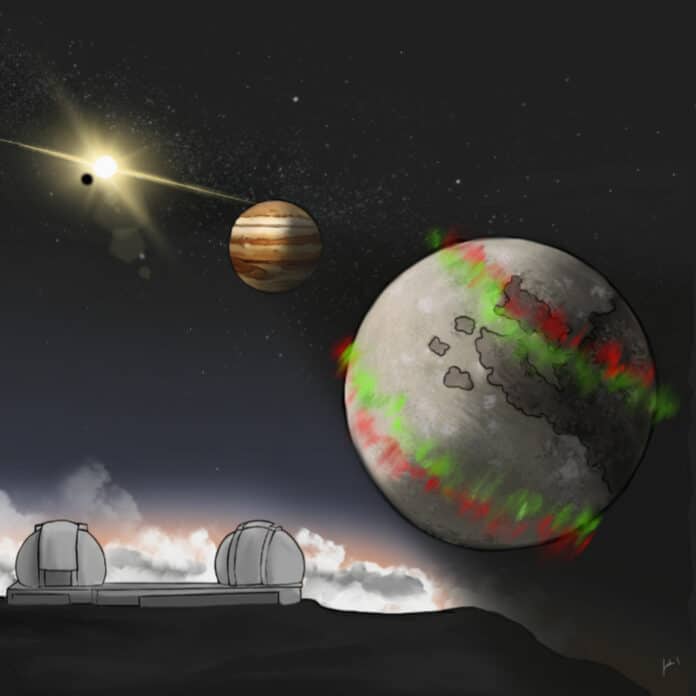Using W. M. Keck Observatory on Maunakea in Hawaiʻi, astronomers have detected new aurorae on all four largest moons of Jupiter: Io, Europa, Ganymede, and Callisto. These aurorae are caused by the gas giant’s strong magnetic field.
Astronomers used Keck Observatory’s High-Resolution Echelle Spectrometer (HIRES) and high-resolution spectrographs at the Large Binocular Telescope and Apache Point Observatory to observe the moons in Jupiter’s shadow. Through this, they could spot faint aurorae without competition from bright sunlight reflected off their surfaces.
Since Jupiter’s strong magnetic field is tilted, aurorae on these moons change in brightness as the planet rotates. Additionally, the atmosphere can respond to the rapid transition from warm sunlight to the cold shadow of Jupiter.
Katherine de Kleer, Caltech professor and lead author of one of two new research papers, said, “These observations are tricky because, in Jupiter’s shadow, the moons are nearly invisible. The light emitted by their faint aurorae only confirms that we’ve even pointed the telescope at the right place.”
The oxygen aurora that we see in the skies near the Earth’s poles is present on all four of the Galilean moons. Still, because the gases on Jupiter’s moons are significantly thinner, a deep red color glows roughly 15 times brighter than the typical green light.
At Europa and Ganymede, oxygen also emits a slightly redder glow at infrared wavelengths than is visible to the human eye. At Io, Jupiter’s innermost moon, volcanic plumes of gas and dust are vast in size, reaching hundreds of kilometers in height. These plumes contain salts like sodium chloride and potassium chloride. Sodium gives Io’s aurora the yellow-orange glow we see in urban streetlamps. The new measurements also show potassium aurora at Io in infrared light, which was not detected elsewhere.
de Kleer said, “The brightness of the different colors of aurora tell us what these moons’ atmospheres are likely made up of. We find molecular oxygen, like what we breathe here on Earth, is likely the main constituent of the icy moon atmospheres.”
The latest observations provide scant evidence for water, igniting a heated scientific discussion about the presence of considerable water vapor in the atmospheres of Jupiter’s moons. The outer three Galilean moons of Jupiter are thought to have oceans of liquid water beneath their thick icy covers. There is preliminary evidence that Europa’s atmosphere occasionally gets its water from an ocean or liquid reserves inside its ice shell.
Carl Schmidt, Astronomy Professor at Boston University and lead author of the second paper, said, “Io’s sodium becomes very faint within 15 minutes of entering Jupiter’s shadow, but it takes several hours to recover after it emerges into sunlight. These new characteristics are insightful for understanding Io’s atmospheric chemistry. It’s neat that eclipses by Jupiter offer a natural experiment to learn how sunlight affects its atmosphere.”
Journal References:
- Katherine de Kleer et al. The Optical Aurorae of Europa, Ganymede, and Callisto. The Planetary Science Journal. DOI 10.3847/PSJ/acb53c
- Carl Schmidt et al. Io’s Optical Aurorae in Jupiter’s Shadow. The Planetary Science Journal. DOI 10.3847/PSJ/ac85b0
